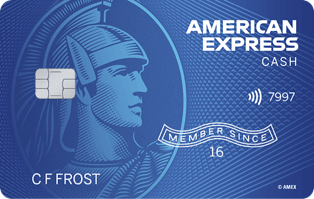- myFICO® Forums
- FICO Scoring and Other Credit Topics
- Understanding FICO® Scoring
- Re: We’re Tom Quinn & Tommy Lee - FICO Score Exper...
- Subscribe to RSS Feed
- Mark Topic as New
- Mark Topic as Read
- Float this Topic for Current User
- Bookmark
- Subscribe
- Mute
- Printer Friendly Page
We’re Tom Quinn & Tommy Lee - FICO Score Experts! Ask us anything.
Is your credit card giving you the perks you want?
Browse credit cards from a variety of issuers to see if there's a better card for you.
- Mark as New
- Bookmark
- Subscribe
- Mute
- Subscribe to RSS Feed
- Permalink
- Report Inappropriate Content
Re: We’re Tom Quinn & Tommy Lee - FICO Score Experts! Ask us anything.
Hi Tom & Tommy. Thanks for taking the time here.
Currently, FICO scores penalize an "innocent" mistake pretty heavily for some while a savvy person can easily game their score. For example, a single late payment has a relatively substantial impact even it was just "I forgot this week." There's a large difference between someone who can easily pay and maybe forgot versus someone in a stressed situation. IMO, a more perfect scoring model should reflect that.
Also, card utilization is able to be gamified, as the crowd here can attest. Carried debt versus paid in full are very different things. Similarly, $10k in card debt may be overwhelming on a lower income, but may be not terrible on $100k income. Current scoring just goes by debt relative to limits, not capacity to repay. Maybe income is beyond the scope of a score but there should be some way that a person isn't unfairly reduced in score when it's not a real risk, or maybe should be penalized but they've previously grown huge limits.
There's an argument that most people don't even know about this to game it and the ones that do tend to pay their bills, but the inverse argument is that the less savvy tend to have lower limits that may cause a reduction in score due to utilization.
- Mark as New
- Bookmark
- Subscribe
- Mute
- Subscribe to RSS Feed
- Permalink
- Report Inappropriate Content
Re: We’re Tom Quinn & Tommy Lee - FICO Score Experts! Ask us anything.
Why do FICO scores penalize high utilization on a given card. Say you have a 10k limits, but pretty common sense there are tiers of utilization on a said card if you surpass a utilization whatever it might be you lose FICO points. Lender gave you a 10k limit to use, but most people dont want to go above say 3k due to 30% utilization and some people dont want to go above 1k for 10% threshold, etc.. So people chase higher limits on card say they go for CLI's so they might have a 50k CL so they feel comfortable carrying a 10k CC debt at 0%.. It seems like a broken system to me personally as lenders have to carry more reserves to lend out for higher CL's for people with excellent credit and incomes, but joe consumer only plans on using say 10k on a 50k card or at least that amount be the highest they will report otherwise they PAY off some if not all of it before statement cuts avoiding a score hit. I know that is an excessive example, but long story short FICO penalizes a person for using the credit they were granted from a lender, yet most lenders don't take that into consideration. Being it seems like a maxed out say 90% 9k out of 10k card is penalized so heavily and weighted so heavily.
- Mark as New
- Bookmark
- Subscribe
- Mute
- Subscribe to RSS Feed
- Permalink
- Report Inappropriate Content
Re: We’re Tom Quinn & Tommy Lee - FICO Score Experts! Ask us anything.
When will FICO 10 be released?
With a 4 year old BK 7 why would all CB's give a risk factor of a public record and only Equifax give a risk factor of recent public record. How long is something considered recent?
- Mark as New
- Bookmark
- Subscribe
- Mute
- Subscribe to RSS Feed
- Permalink
- Report Inappropriate Content
Re: We’re Tom Quinn & Tommy Lee - FICO Score Experts! Ask us anything.
Why does even just a single 30-day late payment, that happened perhaps many years ago, have such a detrimental effect on one's score even after they've displayed perfect payment history in the years since?
For example, it's fairly easy for someone with 10 years of credit history, and no lates, to have scores in the 800's. Whereas, if the same person has a single 30-day late from 5 years ago, their score might be 75 points lower.
While I understand that a very recent late payment is a red-flag that the person might be getting into credit trouble, I would think that after a few months of perfect payments after that, the late payment should have little or no affect on the score anymore - and yet it seems to affect scores by 50 to 100 (or even more) points for many years afterwards, long after the red flags were proven to be a false alarm, until it eventually falls off the report or the person begs and pleads with the creditor to have it removed. I also understand that, as time goes on, their effect on your score is gradually reduce some, but they never stop having a major effect until they are gone. Why is the FICO model so punishing for slip-ups that happened in the distant past?
Also, why is the effect of an old 30-day late so much more drastic against people with higher scores? For example, a single 30-day late from 5 years ago might have almost no affect on someone with a 650 score, but it could be taking 75 points off someone's score who would otherwise have an 850 without it.














 Total SL: $78k
Total SL: $78kUnited 1K - 725,000 lifetime flight miles | Chase Status: 4/24
- Mark as New
- Bookmark
- Subscribe
- Mute
- Subscribe to RSS Feed
- Permalink
- Report Inappropriate Content
Re: We’re Tom Quinn & Tommy Lee - FICO Score Experts! Ask us anything.
One of the misconceptions by new people here is outweighing the negative with the positive. They believe the more positive payment history they have, the more it will offset the negative effect of a late payment.
What I'm curious about is, why isn't on-time payment percentage calculated and included?
As others have mentioned up thread, FICO is all or nothing. Either your perfect, or you're mediocre, at best.
How is it someone can be penalized for around 80 or so points for being late 1 time out of 2000 payments? That's a 99.9995% positive payment history.


- Mark as New
- Bookmark
- Subscribe
- Mute
- Subscribe to RSS Feed
- Permalink
- Report Inappropriate Content
Re: We’re Tom Quinn & Tommy Lee - FICO Score Experts! Ask us anything.
Is there a threshold where larger credit card limits are not factored into utilization ratios? For example, I've often read on internet blogs and forums that limits over $50,000 are treated more like American Express charge cards. The tradeline is reported, but the current balance is not included in utilization calculations. I've deliberated kept my limits below $50k, but I'm wondering if that was really necessary.
FICO8:




VantageScore3:



Inquiries (n/12, n/24):



AAoA: 11 yrs | AoORA: 36 yrs | AoYRA: 12 mos | New Accounts: 0/6, 0/12, 2/24 | Util: 1% | DTI: 1%













- Mark as New
- Bookmark
- Subscribe
- Mute
- Subscribe to RSS Feed
- Permalink
- Report Inappropriate Content
Re: We’re Tom Quinn & Tommy Lee - FICO Score Experts! Ask us anything.
1. What's the logic behind a drop in score for paying off an installment loan? This seems like a milestone that should be rewarded, at least for a period of time. I get the whole credit mix thing but needing to have one with a balance seems crazy.
CH7 BK Discharged 10/16
Oct/Nov 2016: EQ 632 TU 532 EX 573
Feb 2017: EQ 695 TU 673 EX 670
March 2017 EQ 702 TU 676 EX 673
April 2017 EX 683 (TU & EQ unknown)
May 2017 EQ 695 TU 685 EX 693
Feb 2018 EQ 704 TU 687 EX 694
9/24/20: 4 years from discharge FICO 8: EQ 751 EX 765 TU 766 FICO 9 EQ 814 EX 804 TU 821
- Mark as New
- Bookmark
- Subscribe
- Mute
- Subscribe to RSS Feed
- Permalink
- Report Inappropriate Content
Re: We’re Tom Quinn & Tommy Lee - FICO Score Experts! Ask us anything.
What are the minimum requirements for obtaining a "thick file" classification?
Are closed accounts included?
- Mark as New
- Bookmark
- Subscribe
- Mute
- Subscribe to RSS Feed
- Permalink
- Report Inappropriate Content
Re: We’re Tom Quinn & Tommy Lee - FICO Score Experts! Ask us anything.
Thank you for taking the time to do this. I have a some questions, but thought I'd put them all in one post:
1. Are closed revolvers included in the proportion of revolvers with a balance metric (as denominator) and are closed installment accounts counted in the proportion of accounts with a balance metric (as denominator)? (I am assuming the metric is a proportion, if it is a raw number instead or in addition, please advise.)
2. A. How do unpaid charge off balances specifically affect individual and aggregate revolving utilization?
2 .B. If a charge off is not regularly updated for several years and is then paid, it reduces utilization but sometimes causes a penalty due to the update. Is that due to the algorithm realizing the true total length of the delinquency or due to being reassigned to a recent delinquency scorecard due to the date of update/payment?
3. A. are the delinquency and public record scorecards in version 8 segmented by recency (2 years)? If not, how are they further segmented specifically?
3.B. Are all delinquency and PR profiles reassigned to clean scorecards at two years on the mortgage models, 5-4-2?
4. does the segmentation threshold for new accounts differ based on the prior segmentation of thick/thin?
5. do the mortgage models have the same 12 month threshold for new accounts as version 8? And 9?
6. how are mortgages treated differently than other installment loans?
7. was the independent all zero penalty for the category of authorized user revolvers intentional in version 8?
8. why does score 9 move the opposite direction of score 8 for some of the same changes?
9.what level of high revolving utilization invokes the 13th card in Version 9 and is it aggregate/individual or both?
10. is there a scoring difference between paid and payed settled for less?
11. A. are there different or additional reason codes between versions or are they consistent? Would one chart be sufficient to cover the reason codes for all existing versions?
11.B. When a reason code says number, too few, or too many, does it mean an integer? When it says amount, does it mean a dollar amount? when it says proportion or ratio, does it mean a percentage?
12. Can remarks affect score?
Thank you again for taking the time to take our questions, we're very grateful for your answers and their specificity. I apologize for the number of questions but this is for all we know, a once-in-a-lifetime opportunity, and I'm trying to gather knowledge we are unsure of or do not know to assist the MF Community. Thank you so much again.
- Mark as New
- Bookmark
- Subscribe
- Mute
- Subscribe to RSS Feed
- Permalink
- Report Inappropriate Content
Re: We’re Tom Quinn & Tommy Lee - FICO Score Experts! Ask us anything.
Is there a certain range of 'amount owed on revolving accounts' or 'amount owed on accounts' where balances affect utilization calculations more than the percentage?